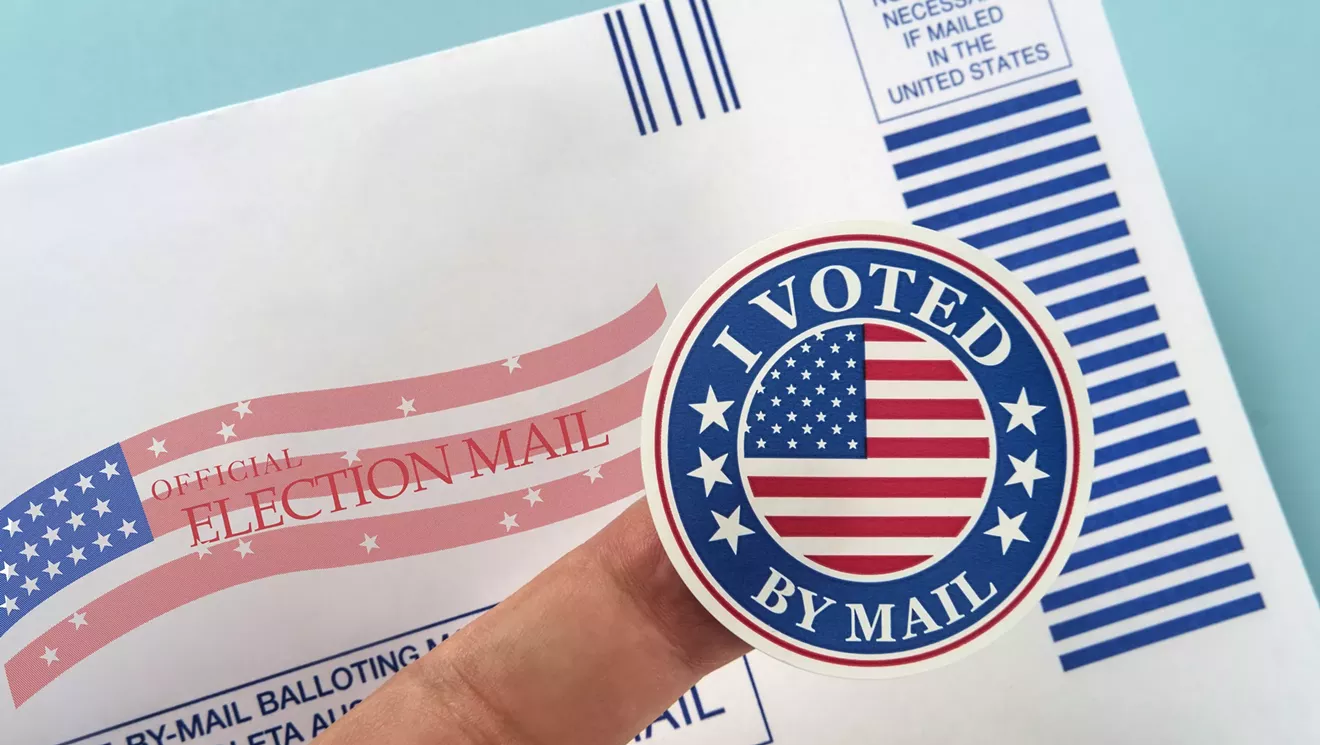
But while it turned out that 287,842 Denver voters actually submitted their ballots in that election, tabulating them to within about 1,000 votes of that final count — with some straggler ballots and overseas and military voters still hanging out — took a week. And that just might be an unavoidable ramification of Colorado’s mail-in voting for midterm and presidential elections.
“You get the benefit of conveniently voting by mail, but unfortunately, on the back end, as long as Denver is presenting the ballots in [two] languages and you have long ballots, the cost of that convenient voting option is slower election results,” says Jocelyn Bucaro, former director of the Denver Elections Division.
That delayed processing comes with an added negative effect at a time when election denialism is peaking. “It does introduce a risk that voters will lose faith or confidence in the election results if they are very slow to report,” adds Bucaro, who now serves as director of the Mobile Voting Project at Tusk Philanthropies.
One big reason for the time it took to count the ballots: 119,845 Denverites submitted their ballots on Election Day.
According to Lucille Wenegieme, a spokesperson for the Denver Clerk and Recorder’s Office, the elections team had already cleared most of the ballots that had been received by November 6 before Election Day. But then the Denver Elections Division received a rush of ballots on November 7 and 8, leading to a clog.
“The ballot was three double-sided pages on 8-by-16-inch paper, which was three times as long as any other county, and which takes longer for even newer scanners to process ahead of the bipartisan teams,” says Wenegieme.
When the Denver Elections Division receives a ballot, the signatures on the envelope are compared by a machine with a matching signature on file. If the signatures match, then the ballot can move along. If there’s an issue with the match, then an elections judge attempts to confirm the signature match. If this judge can’t confirm the match, then the envelope is handed to a pair of election judges — a Democrat and a Republican — who verify the signature themselves. If they determine that the signatures don’t match, then the ballot is determined invalid.
“If there’s an evolution in ways to authenticate voters that don’t require those processes, then maybe that would speed up some of the ballot processing,” Bucaro says. “Denver taxpayers might need to put some more money or resources into equipment to get ballots tabulated faster.”
According to the Denver Elections Division, a refinement of existing signature files will help the signature-verification machine confirm signatures more frequently. This machine’s confirmation rate was approximately 20 percent for the November election; Denver elections staff expects a confirmation rate between 30 and 40 percent for the municipal election. But that leaves 60 to 70 percent of the ballots that still need human signature confirmation.
This sequence of events makes processing mail-in ballots more time-consuming than processing ballots in an entirely in-person setting.
“The tabulation in those situations, the actual ballot scanning, all of those ballots are processed at the polling location rather than in the election office,” Bucaro says, noting that with all in-person voting, the division office just has to tabulate the numbers it receives from the polling locations, and the results can be ready by the end of election night.
Still, the Denver Clerk and Recorder’s Office doesn’t predict having another delayed count for the April 4 municipal election.
“This election, we expect less turnout than in the midterm, and the ballot will be one piece of 8.5-by-11-inch paper, double-sided, so we do not anticipate the same processing demands,” Wenegieme says.
Ballot length aside, the best ways to control delays are to ramp up on staffing, review the processes to “save any bit of time,” and then focus on outreach, Bucaro suggests.
One process improvement that the Denver Elections Division has made for the upcoming vote is additional training for ballot openers, many of whom are older individuals. In fact, there are so many elections judges who use oxygen that the elections division has a special room for them with an oxygen concentrator where they can plug in their tubes.
A major part of this training will focus on the most ergonomically efficient way to open envelopes. Small changes like that can save time, according to staff.
But engagement of voters in Denver is also important, ensuring that people submit their ballots early.
“Outreach early and often to voters to encourage them to get their ballots in,” Bucaro says, noting that the high number of mayoral candidates on the ballot — seventeen this round — may overwhelm voters.
The Clerk and Recorder’s Office did paid outreach through digital and print ads in English and Spanish across the city in the run-up to the November election that reached over 200,000 people at least once, according to Wenegieme. The office also “went to and conducted almost 90 constituent events to meet voters in their communities and let them know about the election, and collaborated with the Broncos and Ball Arena to have early voting and election information at games and on the radio, among other efforts,” she says.
“I don’t know if there’s ever ‘enough,’ but we definitely are committed to getting ‘return my ballot’ higher on people’s to-do lists.”
Stay connected with us on social media platform for instant update click here to join our Twitter, & Facebook
We are now on Telegram. Click here to join our channel (@TechiUpdate) and stay updated with the latest Technology headlines.
For all the latest For Top Stories News Click Here
